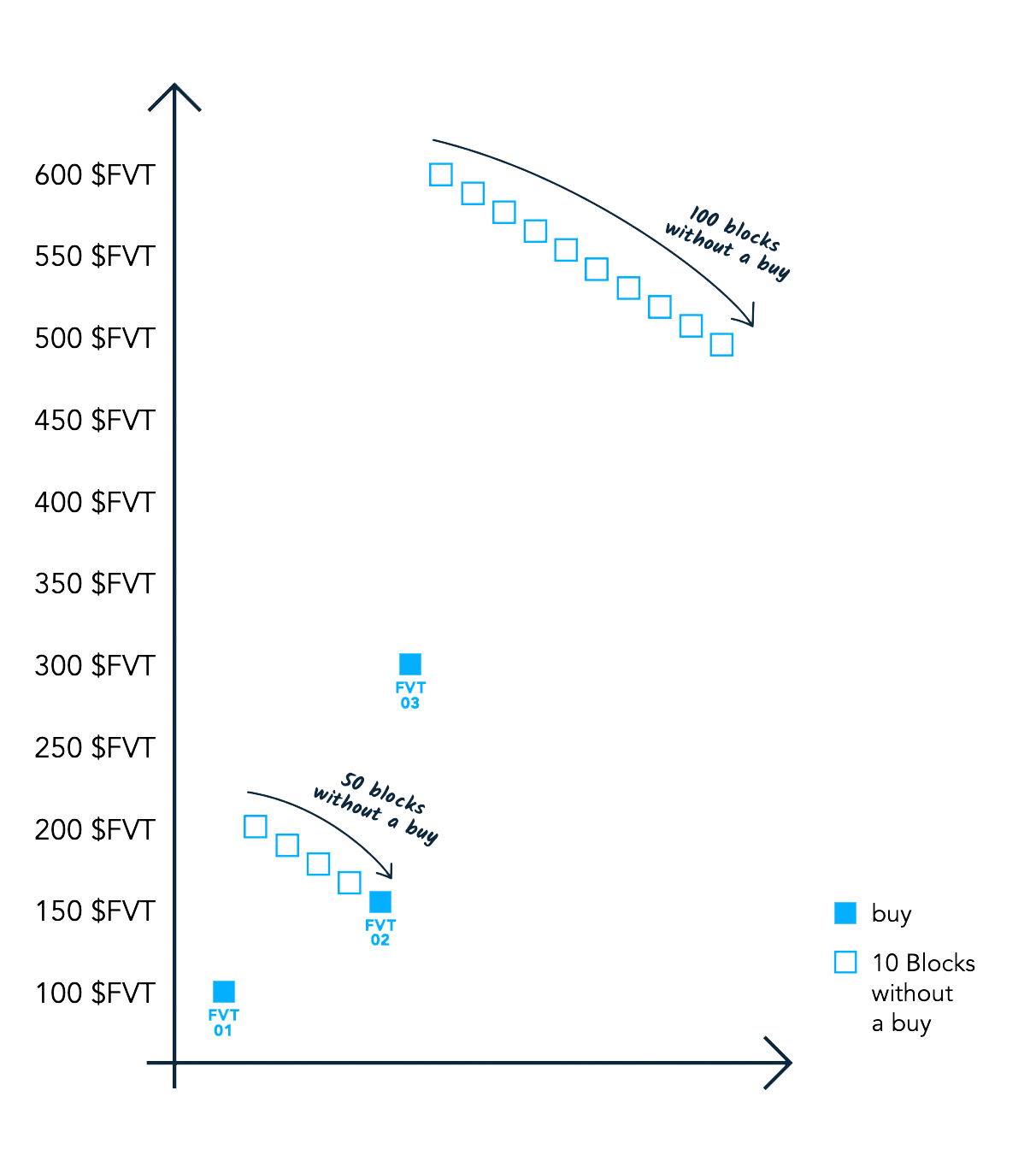Digital Identity Tokens
Decentralised Identity
The DITs in the finance.vote ecosystem contain the following information:
The voting history of the identity.
The reputation of the identity, denoted in voting power $V.
An adoption metric, denoted by a number i.e. $FVT1 to $FVTn, where n is the issuance number.
Metadata allowing customisation of the DIT look and feel.
A default skin for users’ will be generated in the Obelisk phase from procedurally generated art, producing a one of a kind artwork for each DIT. Certain numbers will have increased significance.
Identity Customisation
If you can’t beat them, join them
A Cryptoeconomic Line of Defence
An example buy sequence:
The first user in the system purchases, FVT1 for 100 $FVT.
Over the period of 100 blocks the price returns to 100 $FVT.
FVT2 is bought for 150 $FVT and the price in the next block jumps to 300 $FVT, where the same user immediately purchases FVT3.
The price is now 600 $FVT for an identity and users wait until the price decays until their perceived value of a DIT is reached.

Tradability
Decentralised Reputation
Summary
Many presume that Sybil resistance can only be obtained through the use of hard identity solutions. We propose that pseudo-anonymous identity formation can occur in decentralised systems through the use of non-fungible tokens. We believe this will be an important piece in the evolution of DeFi and decentralised identity.